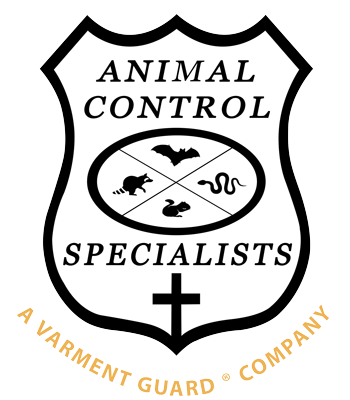Wildlife Exclusion
Pests can cause a lot of major issues for a home and homeowner. Baiting and trapping animals are quick solutions for short-term results, but it is not going to keep the problem from happening again in the future. Wildlife exclusion is the best way to make sure that these pests remain outside where they belong. The process of animal exclusion includes identifying possible access points for animals, establishing various habitat modification standards, and repairing and installing applicable exclusion techniques.
Habitat Modification
One part of the process is to implement habitat modification principles to minimize access to food and water. This will include steps like getting locking garbage cans, storing livestock feed in secure barns or sheds, keeping hoses cleaned up and put away, and making sure to store pet food and feed pets inside the home. These steps will help to minimize the attractiveness of a home for pests to investigate.
Entry Points
The next step will be to identify the possible access points where animals may be able to get in when they are in search of shelter. Trained professionals will be able to identify the possible species of animals that a homeowner may encounter and the best possible exclusion methods that need to be implemented. Every animal is going to have varied intelligence and habits that are going to require a different method in order to exclude that animal from entering a home. Our professionals will also have available to them the best possible materials and tools at their disposal for use in different areas of a home.
Common Exclusion Points
There are various areas of a home and certain circumstances that are going to make an area a possible access point for a pest. Pest control professionals are going to be able to identify these areas and also install the necessary materials to keep the pests out of the home. These common access points include:
- Trees and vegetation that may be hanging over the home or encroaching on it. These can draw pest in near the home.
- Chimneys are part of the roof that can be easy access for pests. Chimney caps and screens can be installed to keep them from climbing into the chimney to nest or travel into the home.
- Porches and decks can serve as optimal areas for certain pests to build nests. Screening can be installed to discourage these burrows and nests.
- Vents such as those for bathrooms, ovens, roofs, and plumbing can offer precut out holes for pests to enter and screens will keep them from being able to enter at these points. If these vents are broken are flimsy, they should also be replaced.
- Roof, soffit, and fascia can develop gaps and spaces over time and they can serve as entry points. These areas should be repaired properly and secured tightly.
- Holes in the siding of a home should be repaired and reinforced so that pests are not able to get in.
Animal Proofing
Much of a wildlife proofing plan will include repairing small areas of a home that may only be minor damage but can result in major pest issues. These pests can do more than just cause damage to a home. Different pests are known to carry diseases and their urine and droppings can also carry various fungi and bacteria that can cause illnesses as well. Even the parasites that feed on them are capable of causing illness in people as well. Expert pest control agents will be armed with the tools, knowledge, and skills to help a homeowner from the beginning to the end of the wildlife exclusion process.
Other Services Offered
Main Service Areas
- Hudson OH Wildlife Exclusion Services
- Uniontown OH Wildlife Proofing Service
- Green OH Animal Exclusion Service
- Cuyahoga Falls OH Animal Proofing Company
- Richfield OH Wildlife Exclusion Company
- Fairlawn OH Wildlife Proofing Companies
- Stow OH Animal Exclusion Company
- New Franklin OH Animal Proofing Companies
- Akron OH Wildlife Exclusion Services
- Tallmadge OH Wildlife Proofing Service
- Silver Lake OH Wildlife Exclusion Company
- East Canton Animal Exclusion Services
- North Canton Wildlife Proofing Service
- Copley, Ohio
- Bath, Ohio
Animal Control Specialists, LLC
New Franklin, OH
(330) 608-1718
